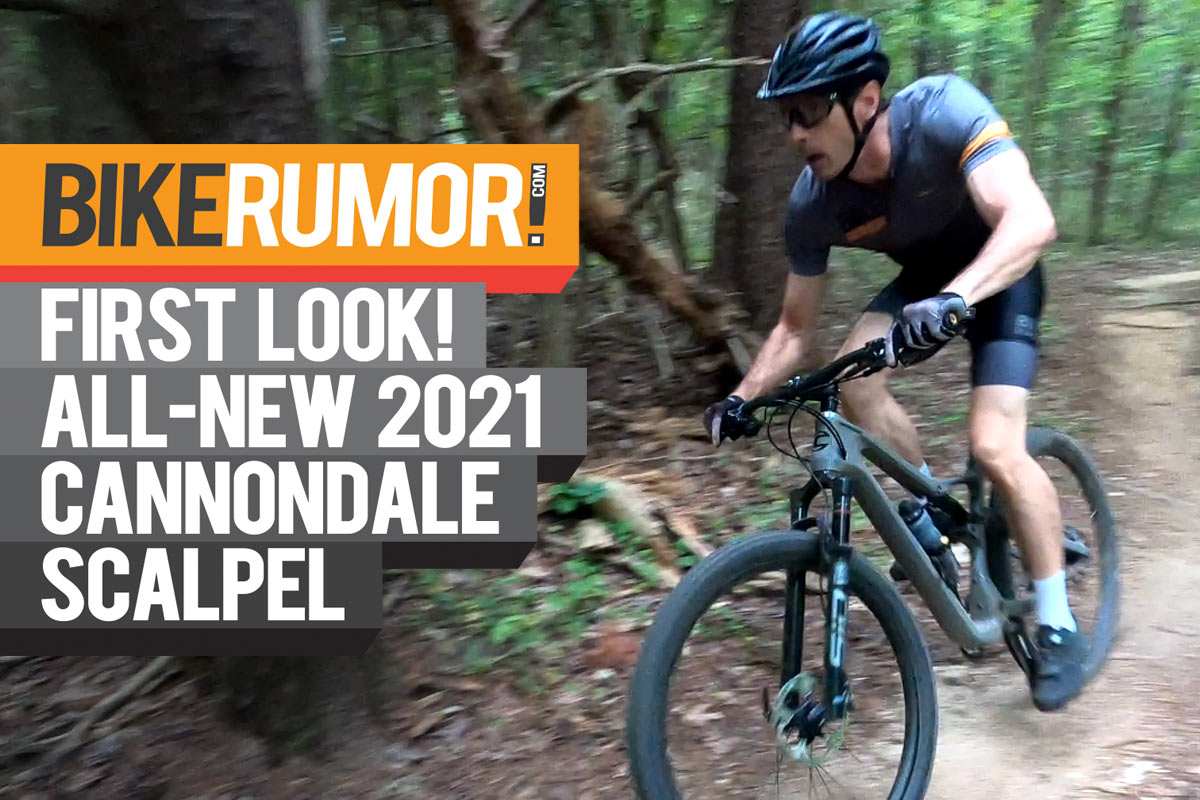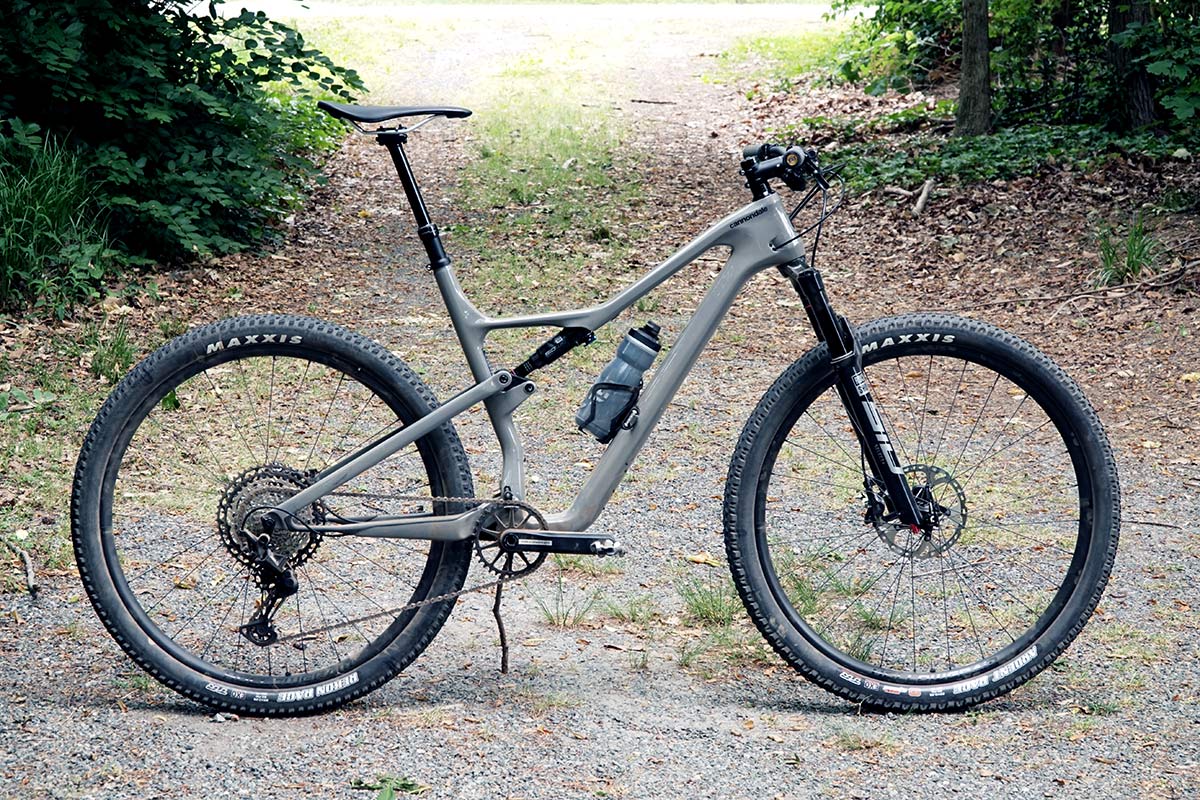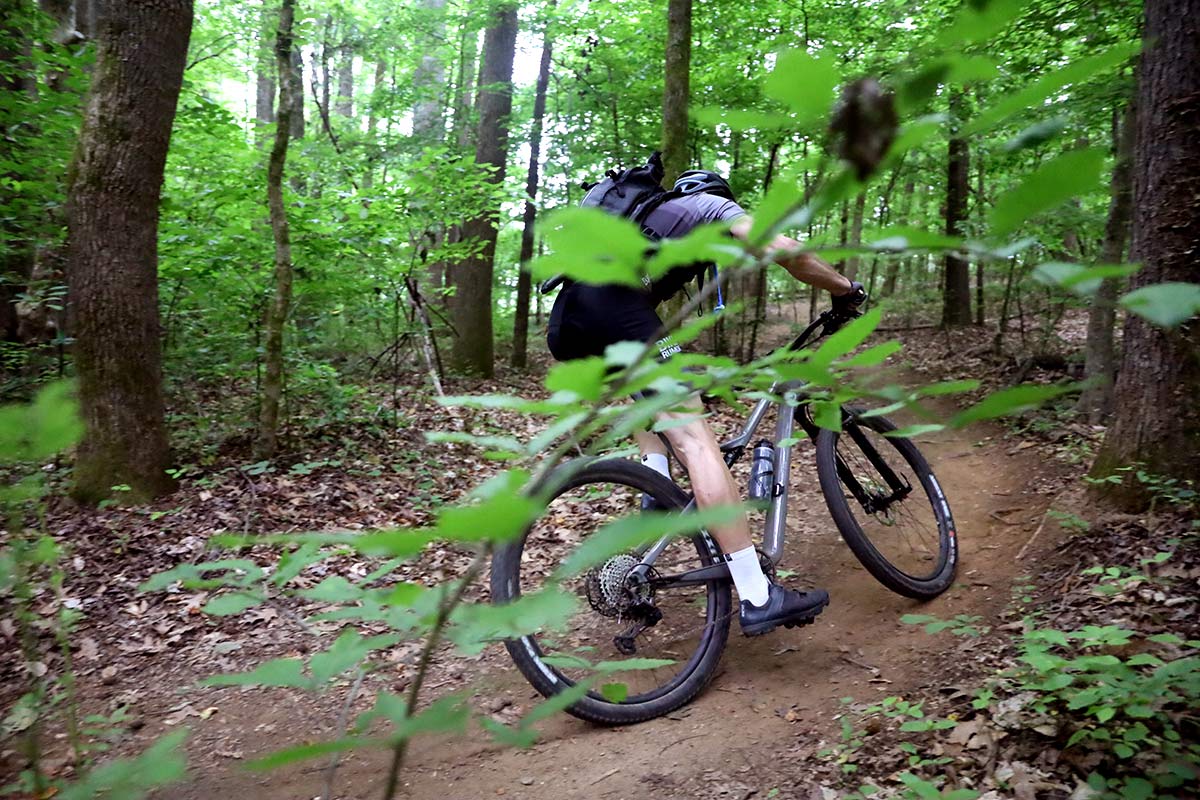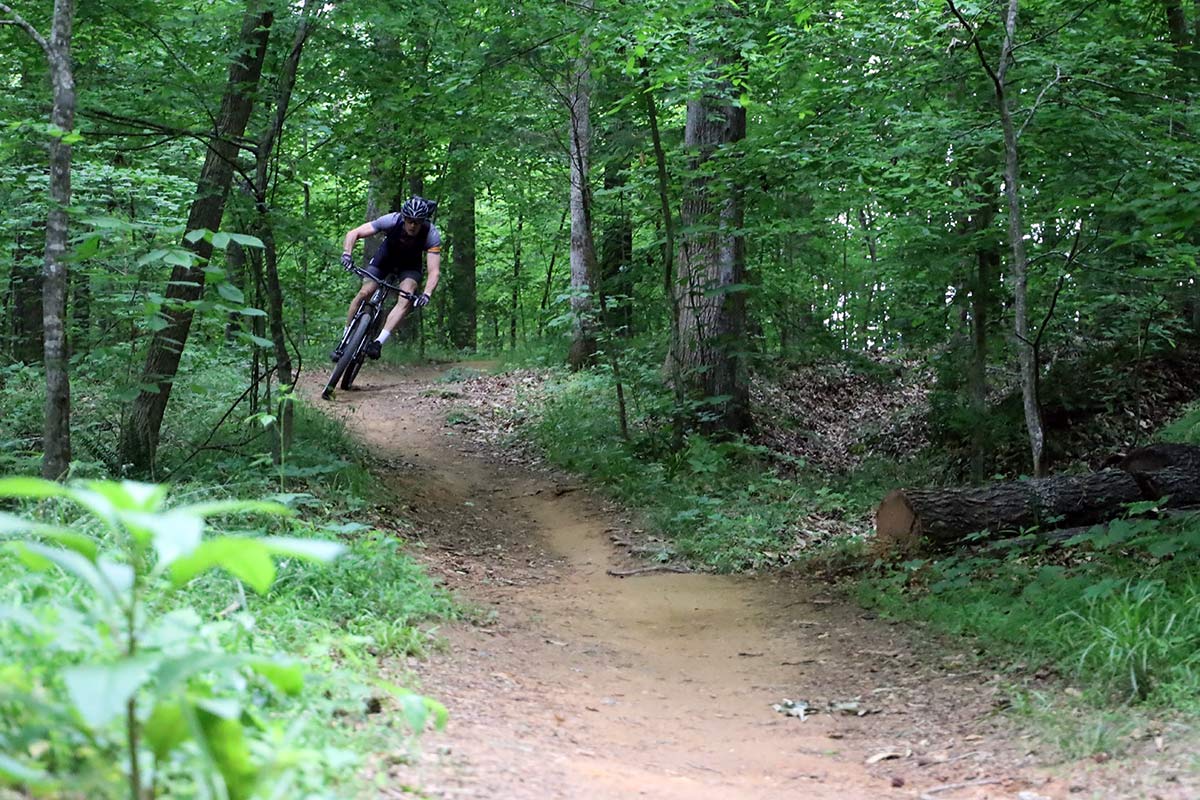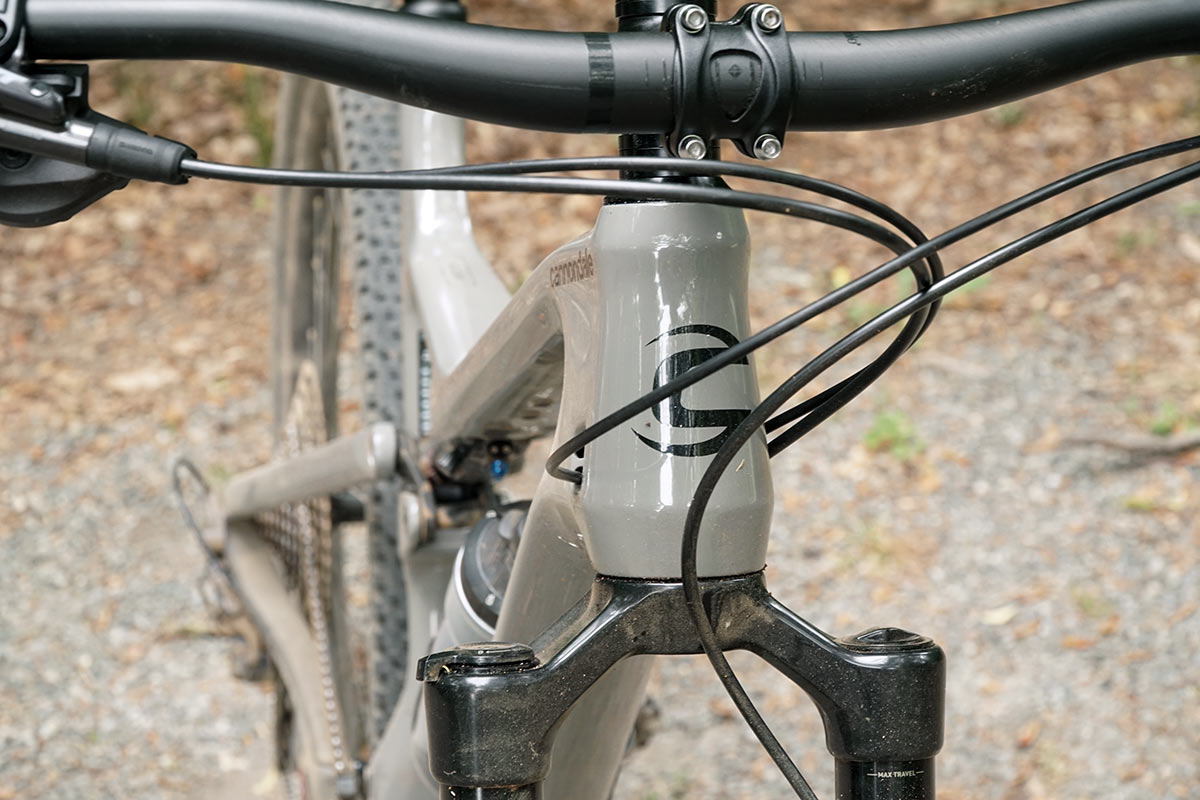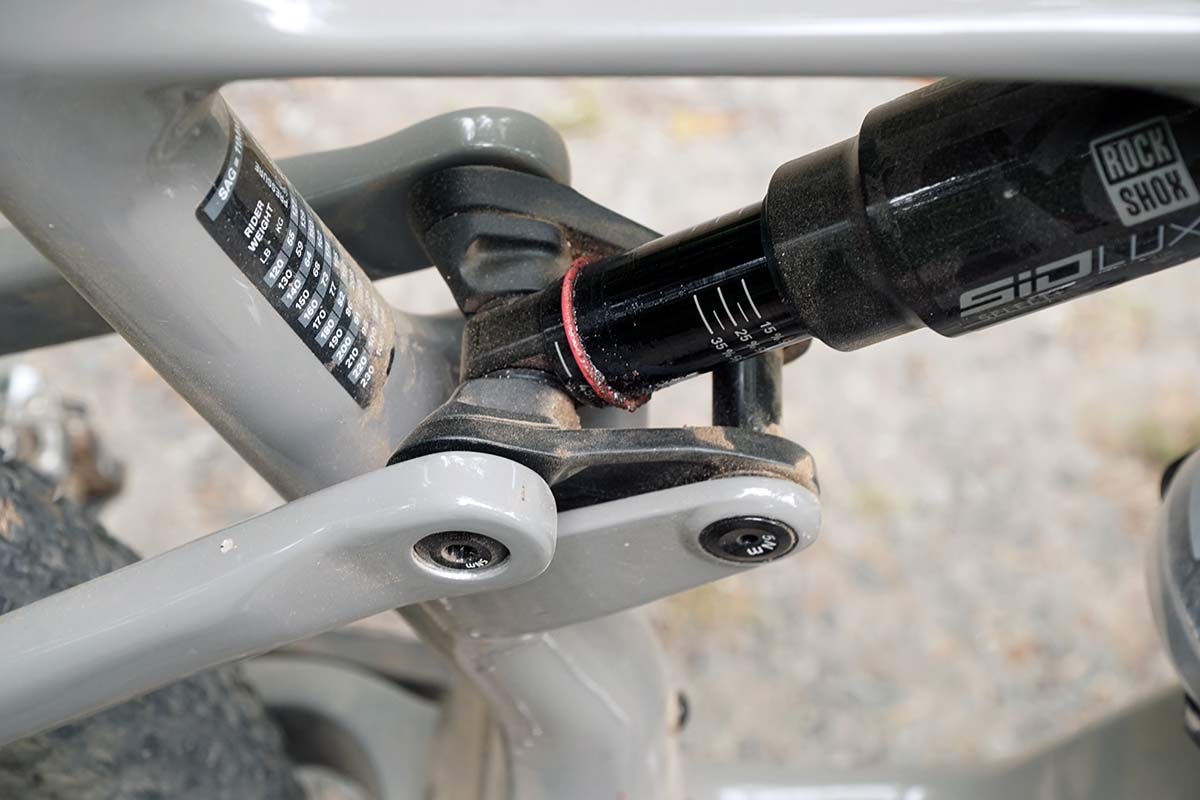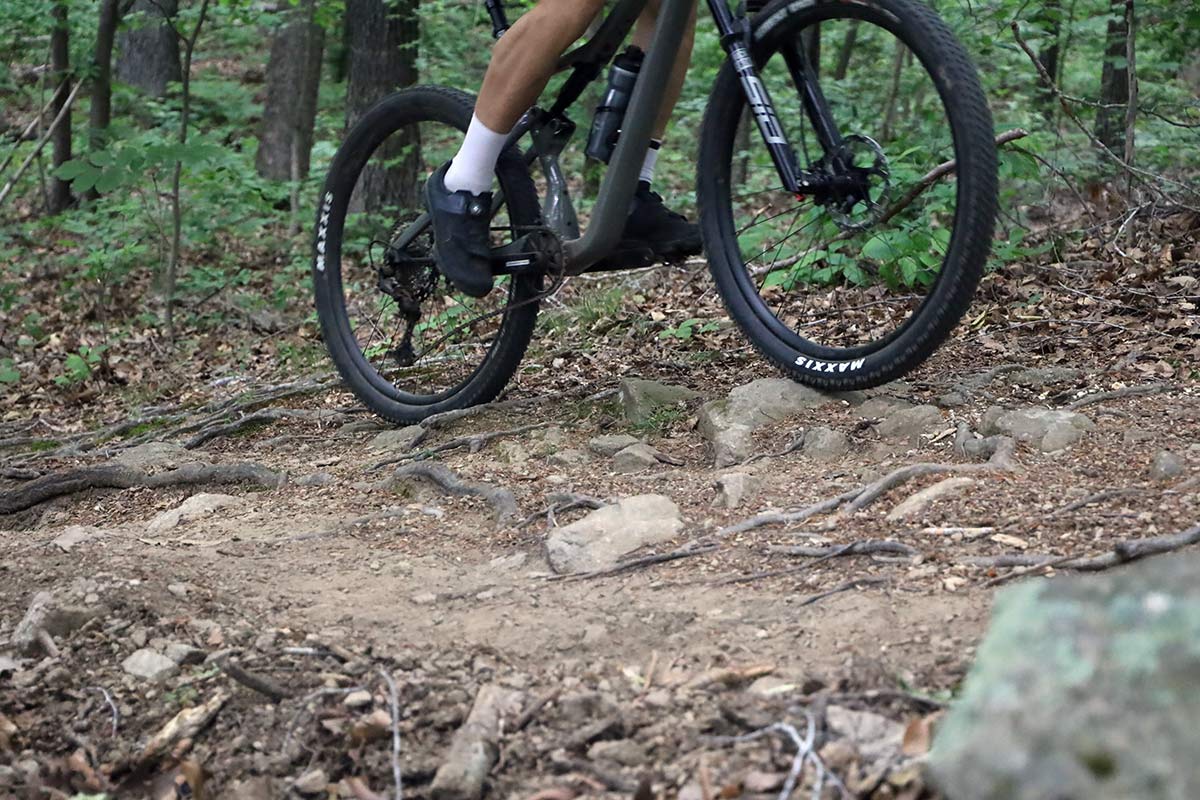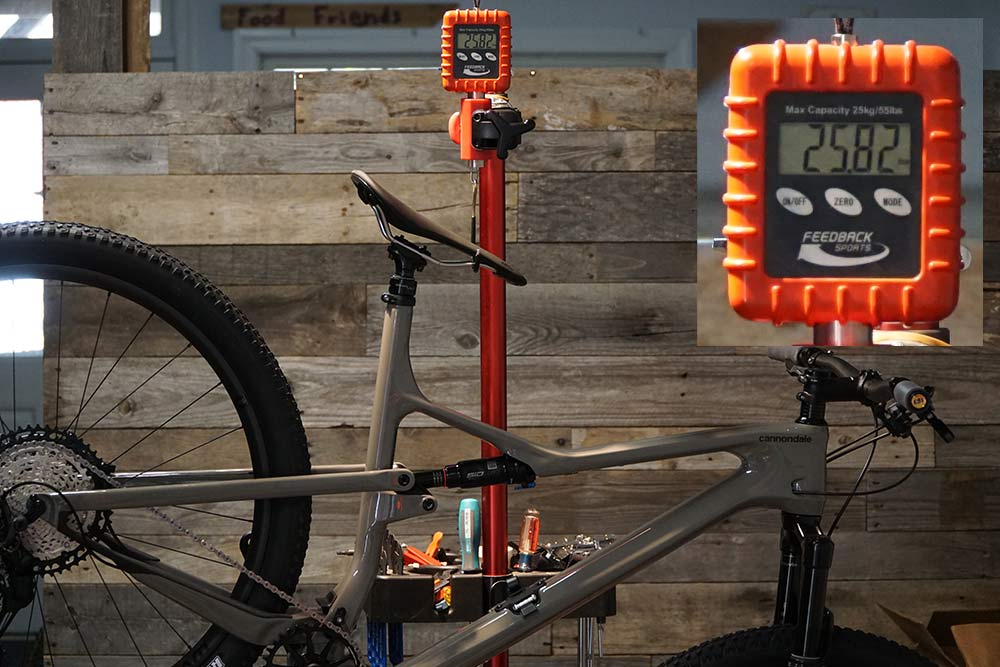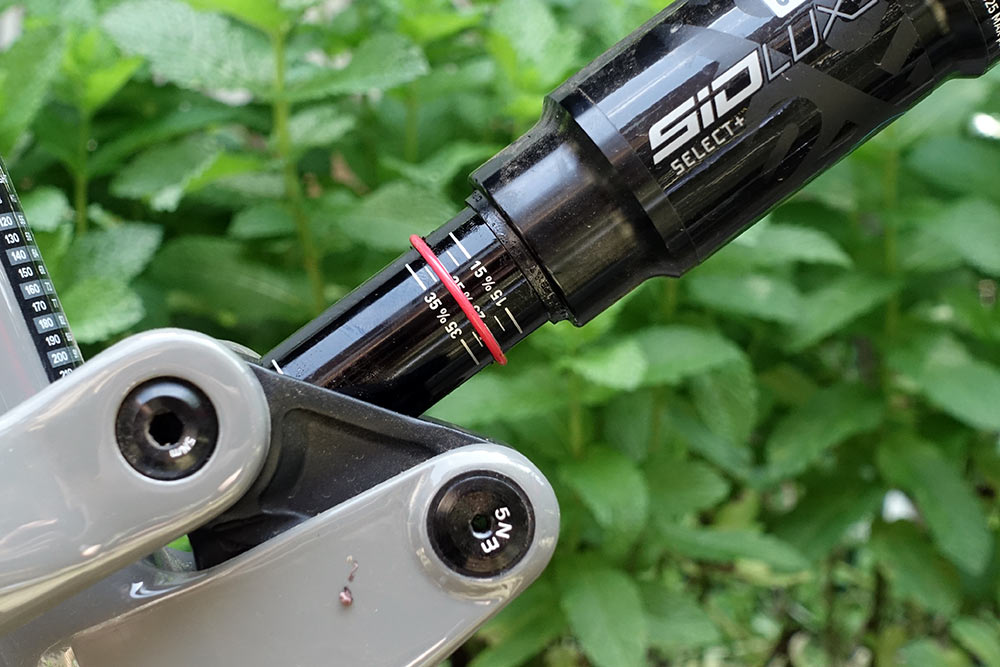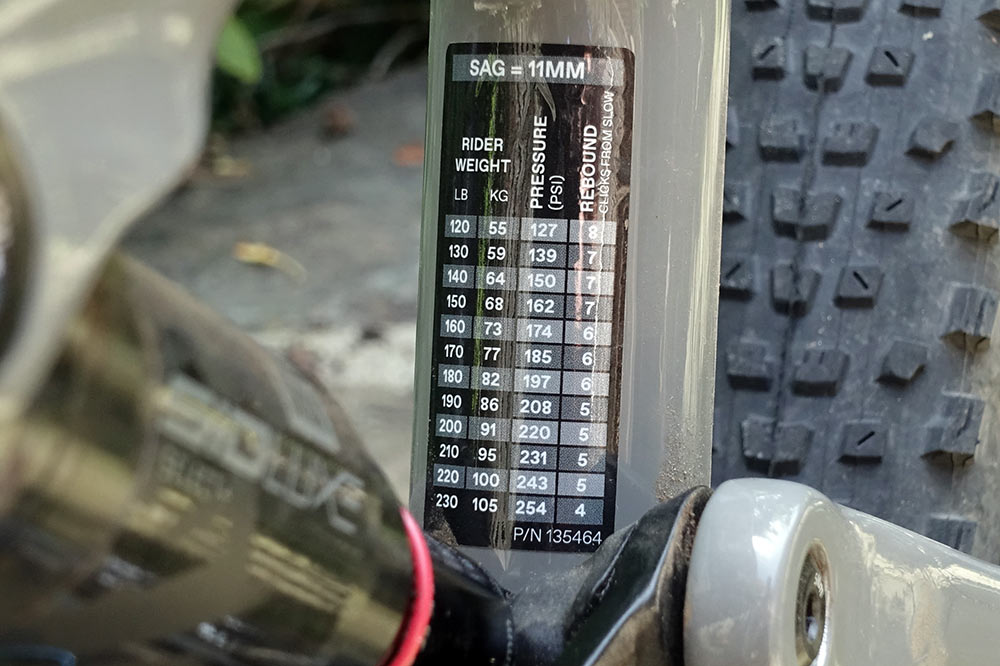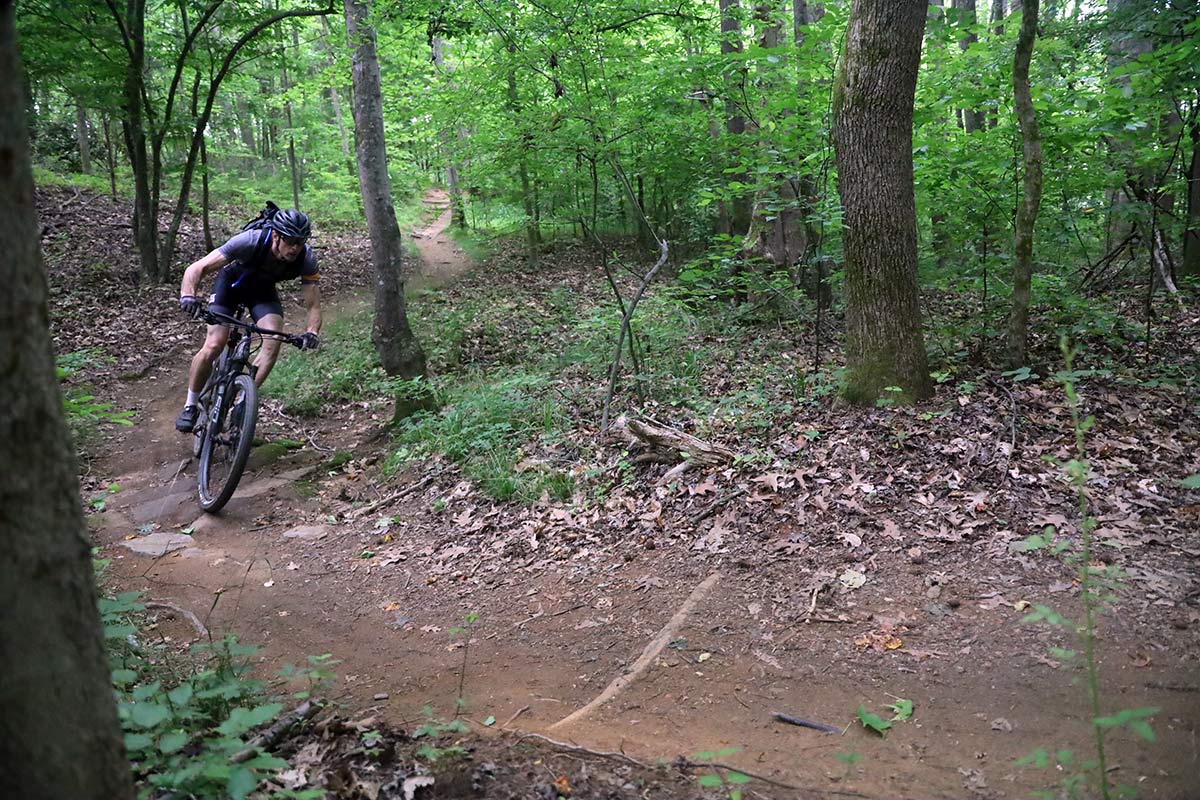A lot of trail bikes get their DNA from a brand’s bigger enduro and all-mountain bikes, then reduce their travel to fall into the “Trail” category. The new Cannondale Scalpel SE does the opposite. It’s an XC bike that added a little travel to hit that massively popular “Light Trail” category.
This backwards math worked, delivering a bike that can plow through typical singletrack with speed and agility. Anything it lacks in big hit brawn it makes up for with exacting handling and snappy pedaling performance. If you’re looking for a trail bike that prioritizes pace over plush, read on…
What’s new about the Scalpel for 2021?
You can read the full tech story on this all-new 2021 Cannondale Scalpel in our launch coverage, and check out all the models, pricing and specs in this post. The video above provides a full feature walk-thru, followed by my ride review with slow-mo and action footage to show how it all works.
Here’s the quick version: The new frame uses a four-bar Horst Link design, except without the rear pivot and bearing hardware. In it’s place is a flat, flexible section at the rear of the chainstay that acts like a pivot.
The design gave Cannondale more control over the spring rate and kinematics, and they took full advantage. This bike puts a big emphasis on small bump compliance at the beginning of the stroke, even allowing a bit (just a bit, mind you) of pedal squat in the first 30% of travel.
The idea is that when you’re hammering up a climb or through a rough section, this helps keep the rear tire digging into the ground to maintain traction. That, they say, ensures every watt of power you’re putting out transforms into forward motion. We all know that races are won on the climbs, so this one should help you get up them just a bit faster.
How fast is it?
Anecdotally, very fast. Subjectively, very fast. It made me feel fast. For two reasons.
First, the handling. Cannondale made a lot of claims about their OutFront handling geometry when they launched the prior Scalpel in 2016. On this one, not so much, but probably only because the focus here was on their new rear suspension design.
But the handling on this bike is absolutely dialed. On paper, it’s looking similar enough to other lightweight 120mm travel trail bikes. And it’s using a standard Rockshox SID fork, nothing with a custom offset or anything. So, much as I hate to admit it, there’s a chance some of it has to do with their Ai (Asymmetric Integration) offset rear end. Maybe. It’s probably not hurting.
But more likely, it’s just a really intelligent use of materials, the right geometry (because even slight differences between bikes can make massive differences in their overall personality), and the fact that everything is laterally stiff.
Materials are easy. They’re using their tough BallisTec carbon to make a stiff yet light frame. Then they add a clear frame protection material on key points of the downtube and stays.
Geometry? You can check the charts here, but the key figures are:
- 67º Head Angle
- 74º Seat Angle (Effective)
- 119.6cm Wheelbase (Size XL)
- 34.4cm BB height
- 43.6cm Chainstay Length
- 4.4cm Rake / 11.2cm Trail
All that looks good. Reasonably long trail for stability, but short enough with a shorter 44mm fork offset to keep handling snappy.
One big improvement over the prior Scalpel I reviewed is that the steering no longer wants to “flop” into a tight turn at slow speeds. Steering and overall handling remains equally predictable at all speeds.
The last piece is stiffness. Cannondale did a lot here, like using a shorter rocker link with tighter space between pivots, and an ultra wide lower main pivot that’s trapped inside the seat tube. That setup makes it almost impossible for those parts to experience torsional flex under normal riding conditions.
Add in the lack of a rear pivot and linkage on the chainstays, and they’ve created an insanely stiff rear end that has no choice but to track perfectly true. Ai or not, this bike’s rear end just works.
The new Scalpel climbs like a rocket
The second reason this bike made me feel fast is that it climbs insanely well. It just can’t seem to lose traction when I’m hammering up a rooty section. Seated or standing, the rear tire remained planted on the ground. You’ll see this in the video embedded up top. When I’m pedaling, there’s little chance the tire will slip.
Even on descents or just coasting through rough sections when I’m not pedaling, the Scalpel keeps the rubber rubbing, whether on roots, rocks or dirt. I like it. It inspired a lot of confidence in the corners, which led to to corner faster.
It helps that the bike is reasonably light, too…
2021 Cannondale Scalpel SE actual weight
My size XL test bike for the Scalpel SE 1 model was 25.82lb (11.71kg). That’s with Cannondale’s carbon-rimmed wheels, carbon handlebar, alloy stem, and DownLow dropper seatpost. The drivetrain is Shimano XT, cranks are Cannondale HollowGram with 34T SpideRing direct mount chainring, and no pedals. Suspension is the latest Rockshox SID Select+ fork and SID Luxe Select+ rear shock.
Just make sure you get the shock set up properly
Cannondale suggests setting sag by millimeters of shock stroke, not as a percentage of shock movement. That’s because 25% of rear wheel travel doesn’t necessarily equate to 25% of shock stroke since it’s not a linear suspension.
They recommend 11mm of stroke for sag, which equates to 26% on the laser-etched numbers on the shock’s shaft. They print that number on a decal with recommended air pressure settings and rebound settings on the seat tube for easy reference. I found that I still had to fiddle with the air pressure to get it at 11mm.
So start with the guide, then adjust as needed. It’s worth the effort. On my first couple rides, I just set it like I normally would. At first, it felt far to harsh, so I let air out and ended up around 30% sag.
For many trail bikes, 30% is perfectly adequate. On the Scalpel, it means you’ll be bottoming out the suspension. Hard.
There’s a sweet spot, and it really is right at 26% sag on the shock. Once I got it there, the bike rode sublimely, which is what leads to the overall incredible impression I have of it.
Overall 2021 Cannondale Scalpel review
If you’re looking for a really fun bike that’s also really fast, give the Scalpel SE a look. As someone who’s ridden and continues to ride a lot of 100mm travel XC full suspension bikes, I really like that I could swap this down to 100mm if I needed a pure race bike.
But I appreciate the extra cush at times, and on this bike the additional travel does not seem to detract from it’s racy performance. Considering it could be built down to a competitively low weight even with this suspension, and it becomes that wonder bike that’s fully capable and fun on most singletrack, but also wicked fast when necessary.
There are other trail bikes out there that are going to feel more capable on gnarly descents and really technical trails. But few if any will feel as fast.
And that’s the standout feature of the new Cannondale Scalpel: Speed. And who doesn’t like speed? If only I had room in my garage for one more bike, I’d be writing Cannondale a very nice letter.
For the full tech story, check out this post. For all models, specs and pricing, read this. Like that video? Subscribe to our YouTube channel.
